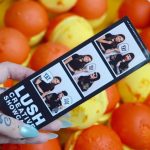In marketing and communications, one size has never ‘fit all’. But personalisation wasn’t always scalable for large businesses, nor affordable for smaller businesses – until now.
Smart technology and people’s willingness to share their information has made it possible for marketers to move away from mass-marketing and towards individual, humanised brand experiences. Now it’s all about individual user experiences, and refining these to make them more specific and relevant to each person.
In fact, people now expect companies to meet their highly personalised expectations.
So, let’s talk a bit more about the benefits, along with some examples and practical strategies for personalising your brand experience.
Give the people what they want
People want their interactions with brands to be human and real, and the results speak for themselves:
- Personalised emails have higher open rates and engagement
- 22% of consumers are happy to share some data in return for increased personalisation
- 52% of consumers are somewhat likely to switch brands if there are no efforts to personalise communications
- Most people spend hours a day on Facebook, Instagram, Google, and other channels that are personalised to their habits
Personalised brand experiences can help customers feel more valued and understood, while providing the right offer and service at the right time. As a result, businesses can increase relevance, boost conversions, and drive more sales.
Want to provide a more personalised brand experience? Here are 3 ways to do it:
1. Encourage in-person experiences
There’s nothing like in-person experiences to humanise your brand and take personalisation to the next level. When customers get to participate in your product and brand, they get an experience that’s unique to them and informed by their personality, decisions, and background.
For example, for the last 3 years Lush Cosmetics UK has delivered Creative Showcase experiences, where customers get hands-on with the product. Of course, Lush stores normally provide plenty of opportunities to touch, smell, and try products, but the showcase took this a step further, allowing customers to make the products, experience live performances, and immerse themselves in elaborate sets in celebration of everything Lush (click on a photo to view gallery).
Experiential strategies also feeds into personalising other aspects of your brand experience. It enables your brand to create more authentic content, as participants capture and share their experience within their networks, and tell your brand narrative, interspersed with their own. And it’s far more personal and meaningful to learn something through your trusted network, rather than targeted marketing.
2. Personalise the branding
Personalised branding can help increase consumer excitement and engagement, turning an everyday product into a must-have purchase or even a keepsake.
Nutella’s popular personalised labels enabled customers to purchase a specially marked jar in-store and request a personalised label online that was delivered to their home. Since the campaign launched in 2013, millions of personalised Nutella labels have been created and shared around the world. And as a result, brand penetration has continued to grow across the local markets that involved. Nutella also took things one step further with an omni-channel approach – in Amsterdam, they took their promotion to the streets with an interactive ad panel that talked to passersby and gave out compliments (along with a free personalised nutella jar). Set up with a video camera, microphone, and dedicated human responding to real-time activity and people in the street, the ad panel surprised passersby with an unexpected brand experience and interaction.
Of course, it’s worth mentioning that this type of personalisation can backfire, as we saw with some awkward/inappropriate Nutella labels generated. When you allow customers control over the message, you have to accept the risk that this will happen.
3. Personalise the marketing
If you personalise your marketing to each individual you can increase your chances of conversion. When you humanise your brand with personalised marketing, it’s easier for prospects to like and trust you. But just as importantly, personalising your marketing means you can provide the exact product your customer needs at the right moment.
In order to personalise your marketing, you’ll need insights on your individual prospects that you can translate into action. There are lots of ways you can do this, depending on your business and product:
- Ask prospects directly about what they need and how you can help
- Let your prospects self-select what they’re interested in
- See what you can find out about prospects from an online search
- Use online technology like cookies and IP addresses to collect personalised data (like location, behaviour, and interests) so you only serve up the most relevant advertising and products
- Segment your email lists based on information you’ve collected so you can tailor your message and offer to their situation
The key with this approach is to change how you do your marketing so that it’s no longer one-to-many, but speaks directly to each individual prospect, their needs, and their situation.
How much is too much?
Before you go ahead and follow the above steps to personalise your brand experience, let’s address the elephant in the room.
With so much customer data available online, personalisation can get a little creepy. While most of us are aware that we’re being watched online, it’s still a little confronting to see ads on social media just a few minutes after you’d discussed a potential purchase with your partner.
Avoid scaring people
Getting your personalised brand experience right means building a relationship with your customers without assuming you know everything about them. It’s about focusing on delivering better service and greater convenience, rather than pushing a sale. And it’s about your brand becoming more human (not less), with the right balance of technology and personalised experiences.
Finally, give consumers options so they can easily opt out of personalisation if it’s not for them. And don’t be afraid to ask for permission to personalise – most people are happy to grant it because they know they’ll get a better brand and customer experience.
Aesthetic can help you create experiences that personally connect with your audiences – fill in the form below, or just give us a call on 03 9044 4353.
Let’s talk.
Follow our Instagram, Facebook and LinkedIn for our latest projects, research and content.






